jiggly pecan pie is more than a dessert; it’s a symbol of American culinary heritage. Often served at Thanksgiving tables, this rich, nutty pie embodies traditional Southern charm. Each slice combines a buttery crust with a luscious filling, making its texture critical to perfection. When aiming for the ideal jiggly pecan pie, the balance between firmness and softness defines the entire experience. Therefore, knowing how that jiggle plays into the final result is key to achieving success.
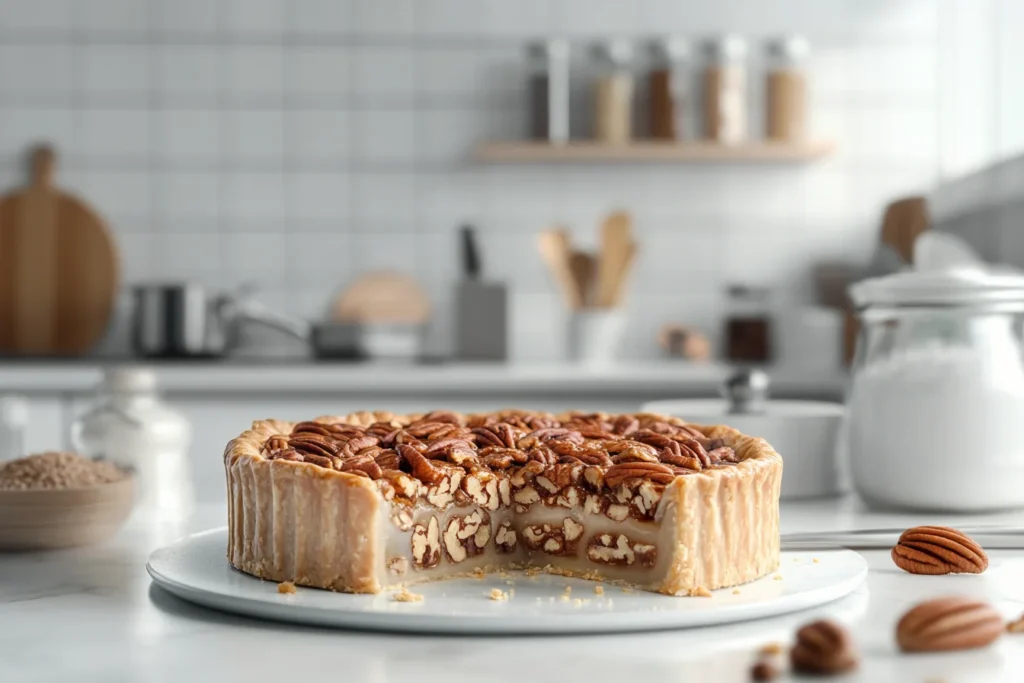
Table of Contents
What’s Inside a Pecan Pie?
At the heart of every jiggly pecan pie lies a short list of simple ingredients. These typically include:
- Eggs
- Corn syrup or maple syrup
- Granulated or brown sugar
- Butter
- Vanilla extract
- Pecans
This blend creates a custard-like mixture that firms during baking. The pecans float to the top, forming a crisp layer, while the gooey base sets underneath. Getting the balance right helps achieve that signature soft, jiggly pecan pie texture.
Custard vs. Non-Custard Fillings
The defining feature of a jiggly pecan pie is its custard base. Custard pies rely on eggs for thickening without added starch. Unlike fruit or cream pies, the filling solidifies solely through the cooking of the eggs. A non-custard version might use flour or cornstarch to thicken, but that changes the texture entirely. Therefore, sticking to traditional custard techniques is essential for the right jiggle.
Role of Eggs and Sugar
Eggs act as the stabilizing agent in a jiggly pecan pie, while sugar contributes sweetness and structure. Together, they form a network that thickens under heat. When baked just right, this matrix gives the filling a subtle jiggle and glossy finish. However, too much heat breaks the bond, leading to a dry or curdled interior. Thus, careful attention to these two ingredients supports the integrity of your jiggly pecan pie.
Baking Basics – What Happens in the Oven
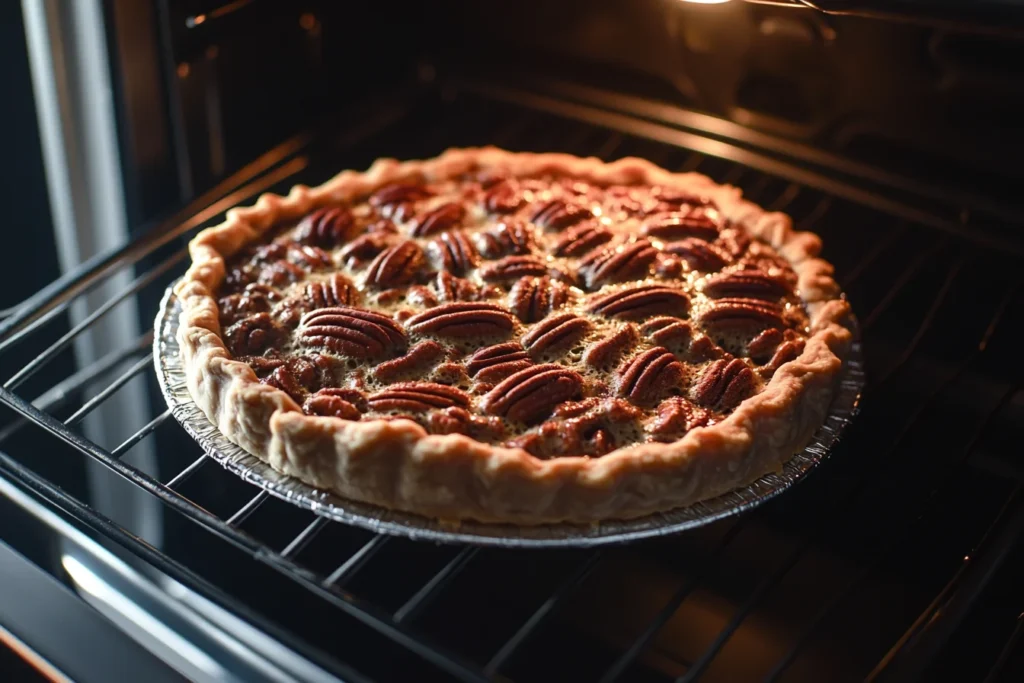
Heat and Chemistry in Baking
Baking a jiggly pecan pie involves more than time and temperature. As the oven warms the filling, the proteins in the eggs begin to coagulate. Simultaneously, the sugars dissolve and caramelize, contributing to a richer flavor and firmer texture. Timing is vital here; too little heat results in a runny pie, while too much causes overcooking. This balance leads to a pie that’s firm yet gently jiggly in the center.
The Jiggle Test – What It Really Means
To evaluate a jiggly pecan pie, gently shake the pie dish. The center should move slightly—like gelatin—but not flow. This movement indicates that the custard has set while retaining moisture. A completely still pie might be overdone, while a sloshy middle signals it’s underbaked. The jiggle test serves as a reliable method for assessing doneness without cutting into the pie.
Differences Between Jiggly, Wobbly, and Runny
When it comes to a jiggly pecan pie, knowing these differences matters:
- Jiggly: Light, controlled movement—ideal texture
- Wobbly: Slightly loose; may need extra baking
- Runny: Liquid center—undercooked and unsafe
Monitoring how your pie behaves as it cools helps confirm its success. A perfectly jiggly pecan pie becomes sliceable as it settles.
Speaking of precision, those struggling with consistency in baking may want to review what flour is best for gluten-free cookies.
How to Know When a Pecan Pie is Done
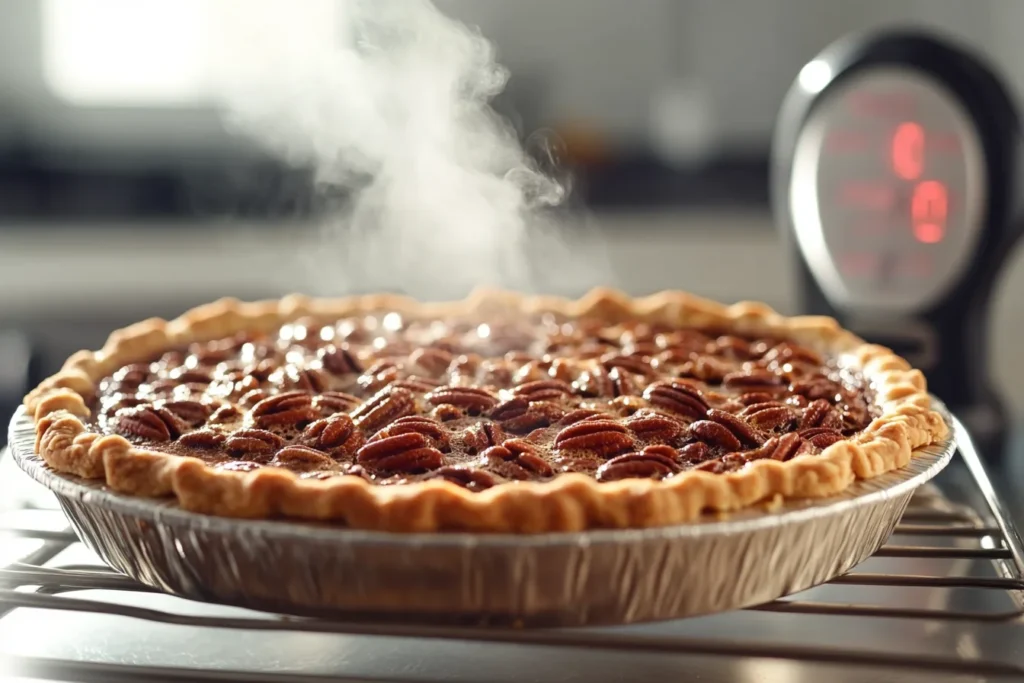
The Visual Cues
A jiggly pecan pie shows specific signs when it’s ready. The top should appear glossy and slightly puffed, with no visible liquid. The edges will look set, while the center should move just a little. A dark golden crust is another good indicator. These subtle changes signal the custard has cooked evenly.
The Toothpick Test
Insert a toothpick into the center of your jiggly pecan pie. If it comes out with a few moist crumbs but no raw filling, the pie is done. This test helps confirm whether the middle has thickened enough. Pair it with the jiggle test for better accuracy.
The Thermometer Trick (Yes, You Can!)
For greater precision, insert a food thermometer into the center of your jiggly pecan pie. A safe, fully set custard should reach 200°F (93°C). This temperature ensures the eggs are cooked without becoming rubbery. While visual tests help, the thermometer offers a data-driven solution.
A similar approach to precision in measuring can be found in our ultimate guide to rice krispie treats.
What “Jiggly” Really Means for Pecan Pie
Should It Jiggle? Yes – But With Boundaries
Yes, a jiggly pecan pie should definitely have some movement. The key is in the center—it should shift slightly when shaken, while the edges remain firm. That controlled jiggle means the filling will hold its shape after cooling. An absence of jiggle suggests dryness, whereas too much implies undercooking.
Overbaked vs. Underbaked Pies
Identifying the correct level of jiggle prevents common baking errors:
- Overbaked: Center is solid and dry; filling cracks after cooling
- Underbaked: Center remains runny; pie collapses when sliced
Achieving the signature jiggly pecan pie texture means baking until it’s just set, then letting it cool completely.
The Center Wiggle Rule
Only the very center of your jiggly pecan pie should move slightly when nudged. This limited wiggle confirms the custard has thickened but hasn’t solidified completely. If the edges shake too, the pie needs more time. Using this rule increases your odds of a picture-perfect dessert.
Cooling Time is Crucial
Why You Should Let It Set
Allowing a jiggly pecan pie to cool properly solidifies the filling and prevents a messy slice. As the pie cools, the proteins firm up further, locking in structure. Cutting it too early releases liquid that hasn’t finished setting, diminishing both appearance and flavor.
What Happens If You Cut Too Soon?
Slicing a jiggly pecan pie before it sets leads to runny, uneven portions. Even if the top seems done, the center requires time to firm up. Always wait at least two hours before serving. This cooling time transforms a jiggly center into a cohesive, flavorful custard.
Tips for Perfect Pecan Pie Every Time
Crust Prep Tips
To support a stable jiggly pecan pie, your crust must be:
- Pre-baked (blind baking helps)
- Chilled before filling
- Brushed with egg wash to seal moisture
These steps improve texture and reduce sogginess.
Filling Tips
Crafting a smooth, jiggly pecan pie filling involves:
- Whisking eggs gently to avoid air bubbles
- Letting the filling rest to remove foam
- Stirring in pecans evenly before pouring
Avoid overmixing to maintain a uniform bake.
Looking for crust alternatives or troubleshooting sogginess? Visit how to fix gamey turkey for kitchen-tested prep methods that cross-apply to other dishes.
Oven Settings and Placement
Bake your jiggly pecan pie on the lower oven rack. This ensures the bottom crust cooks without burning the top. Maintain an oven temperature around 350°F (177°C) for even heat distribution. Consider using a pie shield halfway through to protect the edges.
Common Mistakes and How to Avoid Them
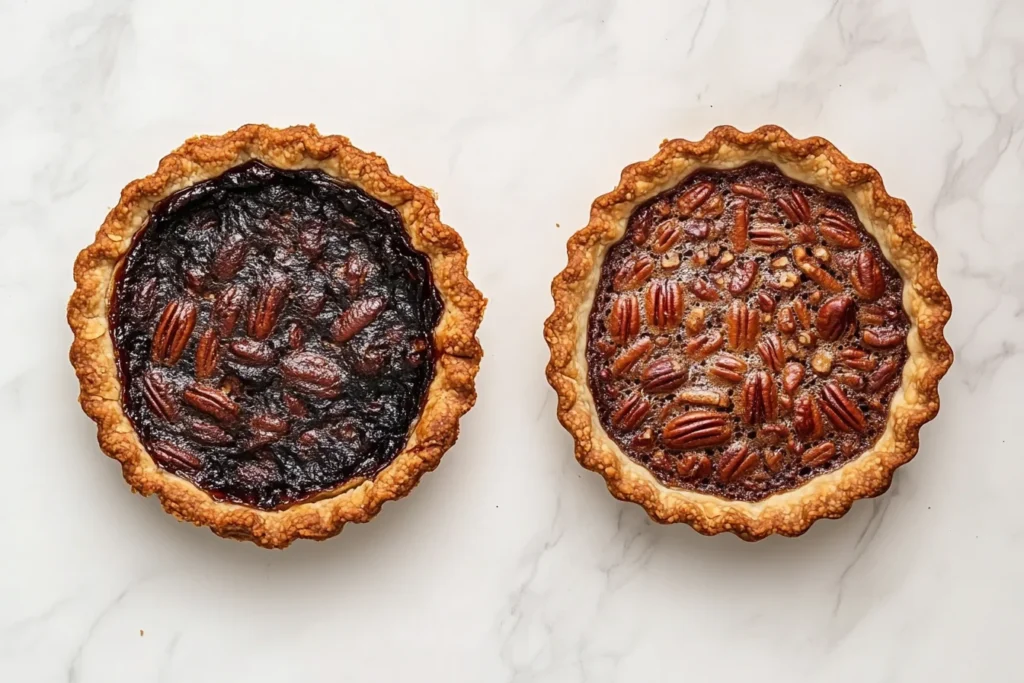
Mistaking Jiggle for Raw
A jiggly pecan pie moves differently than an underbaked one. Use a thermometer or toothpick to distinguish the two. Visual cues are helpful, but tactile tests confirm readiness.
Burning the Crust While Waiting for the Center
To prevent over-browning, use a foil ring or pie shield once the crust begins to darken. That way, your jiggly pecan pie continues to bake evenly without damaging the edges.
Not Using a Pie Shield
Neglecting a pie shield can result in an unbalanced bake. This simple tool protects the outer rim while allowing the custard center of your jiggly pecan pie to cook completely.
Expert Baker Opinions
What Pastry Chefs Say
Professional bakers agree: a perfect jiggly pecan pie should wobble gently in the middle when done. Most recommend using internal temperature as a guide while observing surface texture and crust color.
Advice From Southern Grandmas
Traditional bakers rely on instinct and experience. A Southern grandma might say, “If it jiggles like grandma’s Jell-O but not like soup, it’s done.” Their method supports the art of baking through sight and feel, not just measurements.
Myths About Pecan Pie Baking
It Has to Be Firm When You Take It Out
This myth misleads many. A jiggly pecan pie should not be firm upon removal. It sets as it cools, so baking until it’s rigid risks overcooking.
You Can’t Refrigerate Pecan Pie
Refrigerating your jiggly pecan pie is not only safe but recommended. It preserves the texture and keeps the custard from spoiling. Cover it tightly to prevent absorbing odors.
Troubleshooting Pecan Pie Problems
Too Runny After Cooling
If your jiggly pecan pie stays liquid even after cooling, it was underbaked. Next time, extend the bake time slightly and confirm with a thermometer.
Cracked Top
Cracks occur when the filling overheats. For a smoother jiggly pecan pie, avoid sudden temperature changes and don’t overbake.
Soggy Bottom
A soggy base ruins the texture of your jiggly pecan pie. Use a metal pie pan, pre-bake the crust, and bake on a lower oven rack for better results.
Reheating and Storing Pecan Pie
How to Keep It Fresh
Store your jiggly pecan pie covered in the refrigerator for up to four days. For optimal flavor, allow it to reach room temperature before serving.
Freezing Tips
To freeze your jiggly pecan pie, wrap it tightly in plastic and foil. Thaw in the refrigerator overnight. Reheat at 300°F until warm.
Fun Variations of Pecan Pie
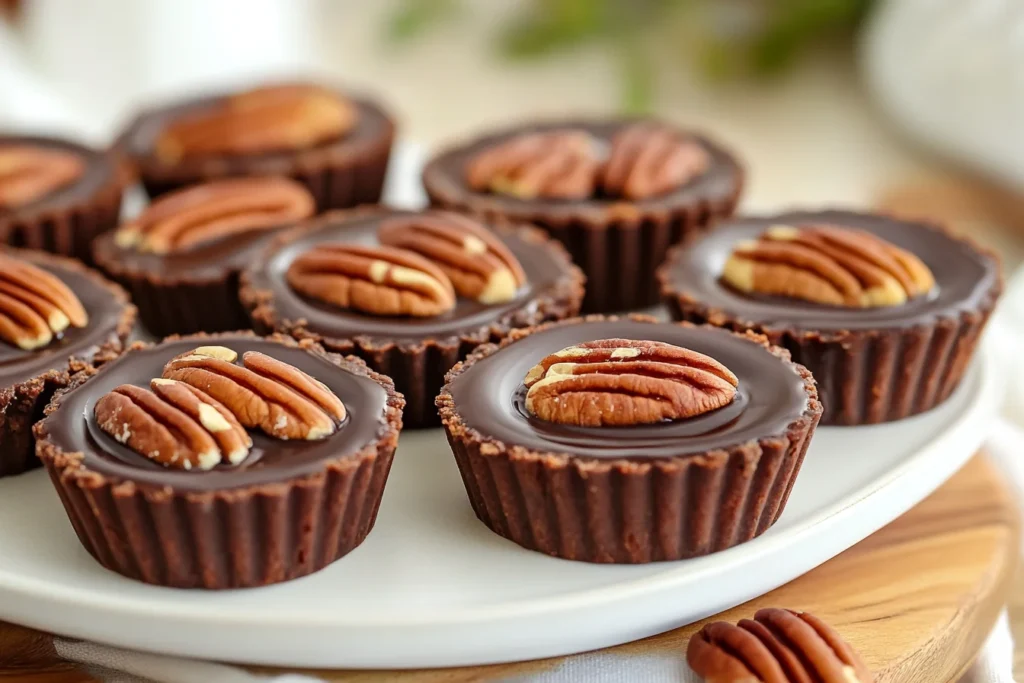
Chocolate Pecan Pie
Add chocolate chips for a richer twist on the jiggly pecan pie. The chocolate melts into the filling, creating depth and complexity.
Maple Syrup Swap
Substituting maple syrup for corn syrup in a jiggly pecan pie creates a deeper, more earthy sweetness while maintaining a similar texture.
Serving Suggestions
Best Toppings and Pairings
- Fresh whipped cream
- Vanilla bean ice cream
- Salted caramel drizzle
These additions complement the richness of your jiggly pecan pie without overwhelming it.
How to Slice Without the Mess
Use a warm, sharp knife to slice your jiggly pecan pie. Clean the blade between cuts to maintain clean lines and professional presentation.
Conclusion
Achieving the perfect jiggly pecan pie depends on mastering balance—firm edges, a lightly jiggly center, and proper cooling time. When baked with precision and care, the result is a dessert with smooth texture, rich flavor, and undeniable appeal. Understanding the science, following the signs, and avoiding common pitfalls leads to success every time.
FAQ
Can you put pecan pie back in the oven?
Yes! If it’s underbaked and hasn’t cooled yet, pop it back in at 325°F until it firms up.
Is it safe to eat slightly undercooked pecan pie?
If the eggs weren’t fully cooked, it’s risky. Always aim for a set center.
Why did my pecan pie puff up and fall?
That’s normal. The puff is from steam and air in the filling. It settles as it cools.

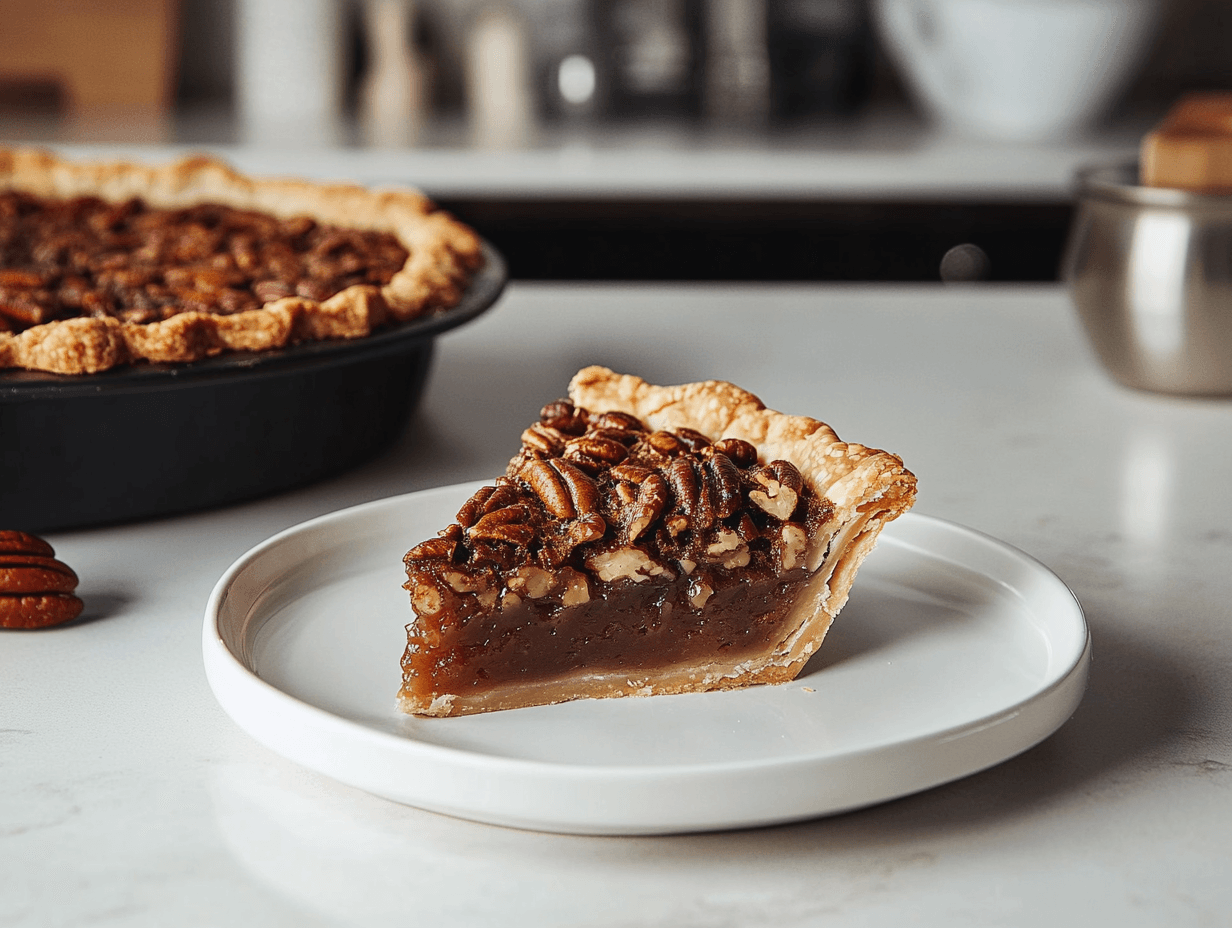
3 thoughts on “Should pecan pie be jiggly when done?”